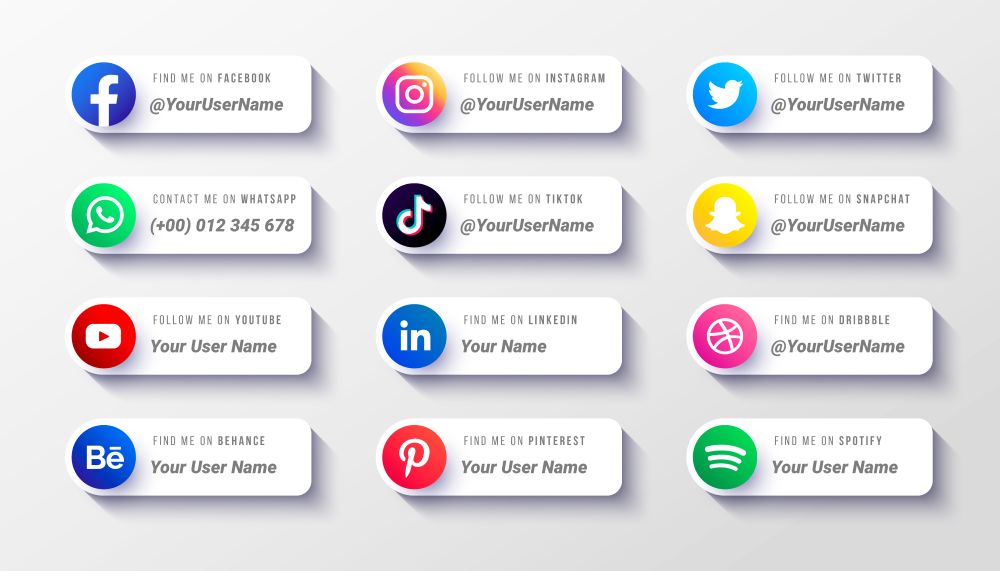Social media has become an essential tool for businesses and brands looking to establish their presence, connect with their audience, and grow their market share. For beginners, however, the journey of starting on social media can feel overwhelming. This guide provides a step-by-step approach to help you in getting started on social media as an upcoming brand effectively and maximize the potential of social media for your business.

Table of Contents
1. Create a Business Email Address

Before diving into social media, it’s essential to create a professional email address that serves as the central hub for all your online registrations, confirmations, invoices, and communications. A Gmail account is highly recommended due to its reliability, security, and integration with other tools.
Steps to Create a Gmail Account:
- Visit Gmail and click on “Create account.”
- Choose a professional and memorable email address, such as MyBusiness@gmail.com.
- Complete the registration form, ensuring that you use accurate details for easy recovery if needed.
- Set up two-factor authentication for added security.
Using a dedicated email for your business ensures that all important notifications are organized in one place, reducing the chances of missing critical updates.
2. Select the Right Social Media Platforms for Your Business

Not all social media platforms are created equal, and each caters to different audiences and content types. Choosing the right platform depends on your business niche, target audience, and goals. Check out our article on The Best Way to Choose Your Social Media Platforms for Business.
Popular Social Media Platforms and Their Uses:
- Facebook: Ideal for businesses targeting a broad audience with diverse content types like videos, images, and text posts.
- Instagram: Best for visually driven brands such as fashion, beauty, travel, and food.
- LinkedIn: Suitable for B2B businesses and professionals offering services like consulting, recruitment, and education.
- Twitter: Great for real-time updates, news, and engaging with a tech-savvy audience.
- TikTok: A must for brands targeting younger demographics with creative and engaging video content.
Steps to Sign Up on Social Media:
- Visit the platform’s official website or download its app.
- Register using your business email address.
- Enter accurate and authentic details, including your business name and category.
- Verify your account via email to ensure full access to platform features.
3. Build a Strong Profile: Logo, Description, and Contact Details

Your profile is often the first impression customers have of your business. Ensuring it’s complete, professional, and engaging is crucial.
Key Elements of a Great Profile:
- Logo: Use a high-quality logo that represents your brand identity. Ensure it fits the platform’s dimensions (e.g., 1080x1080px for Instagram).
- Bio/Description: Craft a clear and concise description that highlights what your business does and what makes it unique. Include relevant keywords to boost discoverability.
- Contact Information: Provide accurate contact details, including an email address, phone number, and website link.
- Call-to-Action (CTA): Add a CTA encouraging visitors to take action, such as “Visit Our Website” or “Shop Now.”
4. Develop a Content Strategy: Plan Before You Post

Posting random content without a strategy can lead to wasted efforts. A content strategy helps you deliver consistent, valuable, and engaging posts that resonate with your audience.
Steps to Create a Content Strategy:
- Define Goals: Set clear objectives, such as increasing followers, driving website traffic, or boosting sales.
- Know Your Audience: Research your target audience’s demographics, interests, and behaviors.
- Content Types: Plan a mix of content, including educational posts, promotional offers, behind-the-scenes content, and customer testimonials.
- Post Frequency: Determine how often you’ll post based on platform algorithms and audience preferences.
- Use a Content Calendar: Schedule posts in advance using tools like Hootsuite or Buffer.
5. Create Engaging Visuals: Photos and Videos

High-quality visuals are the backbone of successful social media content. Eye-catching images and videos can significantly improve engagement and attract new followers.
Tips for Creating Engaging Visuals:
- Use Editing Tools: Apps like Canva, Adobe Spark, and CapCut make it easy to design professional-looking graphics and videos.
- Maintain Consistency: Stick to a color palette and style that aligns with your brand identity.
- Show Authenticity: Feature real-life scenarios, team members, and customer experiences.
- Optimize for Each Platform: Use the recommended dimensions and formats for each platform to ensure clarity and appeal.
6. Engage with Your Audience: Build Relationships

Engagement is the key to building trust and loyalty among your followers. Social media is not just about broadcasting your message; it’s about fostering two-way communication.
Ways to Boost Engagement:
- Respond to Comments: Acknowledge and reply to comments on your posts to show that you value your audience.
- Host Q&A Sessions: Use Instagram Stories or Facebook Live to answer audience questions in real time.
- Run Contests: Offer incentives like discounts or freebies for followers who participate in your campaigns.
- Collaborate with Influencers: Partner with influencers in your niche to reach a wider audience.
7. Track Performance: Measure and Improve

Understanding what works and what doesn’t is crucial for optimizing your social media strategy. Most platforms offer analytics tools to track your performance.
Key Metrics to Monitor:
- Engagement Rate: Measures likes, comments, shares, and clicks.
- Reach and Impressions: Tracks how many people saw your content.
- Follower Growth: Indicates the success of your efforts in attracting new followers.
- Conversion Rate: Measures how well your content drives desired actions, such as website visits or sales.
Tools for Tracking:
- Use built-in tools like Instagram Insights or Facebook Analytics.
- Explore third-party platforms like Google Analytics, Sprout Social, or HubSpot.
8. Stay Updated and Adapt to Trends

Social media is ever-evolving, and staying updated with the latest trends ensures your business remains relevant.
Tips to Stay Current:
- Follow industry leaders and influencers to learn from their strategies.
- Experiment with new features like Instagram Reels or LinkedIn Polls.
- Monitor competitors to understand what works in your niche.
- Regularly update your content strategy based on audience feedback and platform changes.
Conclusion
With the above mentioned steps you have the knowledge and checklist to get started on any social media platform as a business or a brand. Do well to get more tips on brand development by visiting our blog


